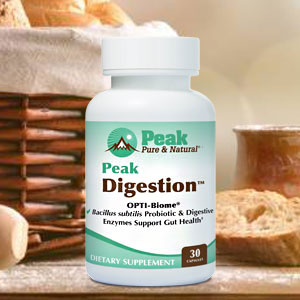Get Easy Health Digest™ in your inbox and don’t miss a thing when you subscribe today. Plus, get the free bonus report, Mother Nature’s Tips, Tricks and Remedies for Cholesterol, Blood Pressure & Blood Sugar as my way of saying welcome to the community!
The two most dangerous gluten-free foods to eat in restaurants

If you’re avoiding gluten because of celiac disease or gluten sensitivity, eating out is like playing Russian roulette…
Sometimes, you feel great. Other times, you feel lousy for days. The worst part is you never know which meal is going to get you.
Now, if a meal is advertised as gluten-free, it should be gluten-free. So why do certain restaurant meals make you sick?
Well, as you probably suspected, plenty of “gluten-free” restaurant meals contain a hefty dose of gluten. And two restaurant foods are much more likely to be tainted than others…
Gluten-free pizza and pasta aren’t safe
A new study from Columbia University found that one-third of gluten-free restaurant foods aren’t truly gluten-free.
In the study, more than 800 investigators set out with portable gluten sensors to test the true gluten content of gluten-free restaurant meals.
What they found was alarming (but not necessarily surprising) to people with serious gluten issues like celiac disease and non-celiac gluten sensitivity.
Foods must contain less than 20 parts per million of gluten to be labeled “gluten-free.” But roughly 33 percent of gluten-free restaurant foods don’t meet this standard.
Breakfast foods are the safest. Only about 27 percent of breakfast foods advertised as not containing gluten are tainted with gluten. But by dinner time, this number rises to 34 percent. That means gluten-free foods are probably getting more contaminated as the day goes on.
Researchers also determined the two gluten-free restaurant foods that are most likely to be tainted — pizza and pasta. More than half of these gluten-free menu options come with a heaping dose of gluten.
How is this allowed to happen?
Researchers say pizza probably becomes contaminated when it’s cooked in the same oven as pizza that contains gluten. And the same goes for gluten-free pasta. It’s often prepared in the same pot that’s used to prepare traditional pasta.
Why are these oversights allowed to happen?
It comes down to management and staff not understanding what foods contain gluten, how easily cross-contamination happens and how serious it is for some people.
“Restaurant kitchens are just not built to assure the prevention of gluten contamination,” said Dietitian Lona Sandon, an associate professor of clinical nutrition at the University of Texas Southwestern Medical Center at Dallas who commented on the study but was not involved with it. “A chef may easily set a gluten-free bun down on a cutting board that just had a wheat bun on it while trying to get food out quickly to the customer. Then again, staff may just not know what has gluten in it and what doesn’t.”
Eating out safely when you’re gluten-free
So, how can you get a tasty and safe gluten-free meal on-the-go?
Well, based on the results of this study, staying away from gluten-free pizza and past when you’re eating out will increase your odds of ending up with a safe meal.
You can also choose restaurants that are certified by the Gluten-Free Intolerance Group or listed in the National Celiac Association Gluten-Free Restaurant Database. These are more likely to practice strict standards that prevent cross-contamination.
Chances are, though, you’ll end up at a restaurant with questionable gluten contamination prevention practices at some point. When you do, make sure to:
- Avoid rush times. When kitchen staff and servers are busy, foods are most likely to get contaminated.
- Talk to your server. Tell your server about your dietary restrictions right away and be specific about what foods you need to avoid (i.e. wheat, rye, barley and foods made with these grain).
- Ask that your foods are prepared on a clean surface with clean utensils. This will reduce your odds of contamination quite a bit.
- Avoid options that tend to be sneaky sources of gluten. Salads, fried foods, sauces, and marinades may contain gluten that the restaurant staff isn’t aware of.
- Thank your server early and often. It’s not easy waiting on someone with special dietary restrictions. If you express your appreciation right away, your server will be more likely to go above and beyond to make sure you get a safe and delicious meal.
Editor’s note: Did you know that when you take your body from acid to alkaline you can boost your energy, lose weight, soothe digestion, avoid illness and achieve wellness? Click here to discover The Alkaline Secret to Ultimate Vitality and revive your life today!
Sources:
- One-third of ‘gluten-free’ restaurant foods in U.S. are not, study finds — MedicalXpress
- Dining Out — Celiac Disease Foundation
- Restaurant Dining: 7 Tips for Staying Gluten-Free — Gluten Intolerance Group













